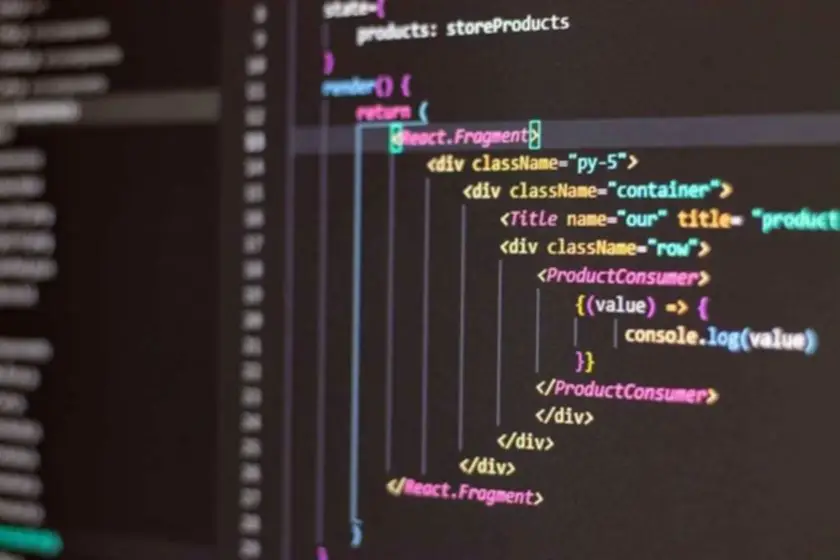At the center of DevOps is the necessity for seamless collaboration and communication between development and operations groups. Traditional silos are dismantled, fostering a culture where group members work intently collectively to realize common goals. This collaboration extends past simply builders and operations employees to incorporate QA engineers, safety specialists, and other stakeholders.

Conventional development and operations groups are usually siloed, with every staff having its own set of duties and tools. This can lead to communication and collaboration challenges, and it can additionally slow down the software development course of. Traditional methods of measuring productiveness in software program engineering groups did not determine the foundation cause.
As such, each staff works independently and does not belong to any other staff. While one on-call engineer responds to incidents, DevOps teams assign a number of folks for escalations in order that the on-call engineer can escalate it to the proper individual or staff. As Quickly As the problem is resolved, teams analyze the system once more to get ready for future incidents. When you migrate from AWS to Azure or GCP, you might need to realign the software program.
DevOps tradition emphasizes collaboration and shared accountability between development and operations groups, breaking down silos to enhance communication and effectivity. It fosters a sense solution architect role of joint possession over the software program from improvement to upkeep, encouraging steady enchancment and studying from experiences. Continuous suggestions loops permit groups to shortly determine issues, make enhancements, and modify processes or deliverables to fulfill user and organizational wants. It fosters a culture of agility, where groups are aware of suggestions from clients, stakeholders, and inner peers. Suggestions ensures that work aligns with objectives and reduces the likelihood of mistakes compounding throughout the software development lifecycle.
Encouraging collaboration across different capabilities, corresponding to development, operations, QA, and security, ensures that each one elements of the project are thought-about and addressed comprehensively. Structuring a DevOps group effectively requires the adoption of key practices that promote collaboration, automation, and continuous enchancment. These practices make certain that the staff capabilities as a cohesive unit, driving effectivity and innovation. At the heart of this transformative journey lies the DevOps staff — a bunch of dedicated individuals entrusted with the task of bridging the gap between development and operations.

Software Program Builders

By emphasizing core principles similar to collaboration, continuous feedback, and automation, organizations can dismantle conventional silos and foster a more cohesive and agile setting. Key roles inside the team, from DevOps Engineers to Safety Specialists, work in tandem to ensure strong, scalable, and safe software program delivery. Automation is a cornerstone of DevOps, aimed toward lowering handbook intervention, minimizing errors, and rushing up processes. By automating repetitive tasks corresponding to code integration, testing, and deployment, groups can concentrate on higher-value activities. Automation instruments like Jenkins for CI/CD pipelines, Ansible for configuration management, and Terraform for infrastructure as code are generally used to streamline operations and improve consistency. This reliance on automation enhances efficiency and reliability, guaranteeing that the software development lifecycle is clean and predictable.
Here, ops acts as an inside advisor to create scalable net providers and cloud compute capability, a sort of mini-web services provider. In our 2021 World DevSecOps Survey, a plurality of ops professionals informed us this is exactly how their jobs are evolving — out of wrestling toolchains and into possession of the team’s cloud computing efforts. Dev groups continue to do their work, with DevOps specialists inside the dev group answerable for metrics, monitoring, and speaking with the ops staff. In phrases of ROI, the financial savings in labor costs can result in faster product launches, usually reducing growth time by 25–30%.
- This precept helps in building a strong team spirit and a way of collective mission.
- Shared metrics cut back the likelihood of misaligned priorities between development and operations while driving accountability.
- Select a couple of team members who fill other DevOps roles and ask them to serve as DevOps champions for the organization.
- When it comes to constructing a DevOps staff structure, one measurement doesn’t fit all.
They should know the ins and outs of take a look at automation frameworks, such as Selenium, and be expert in how to write exams that cover lots of ground but that don’t require a long time to run. They should also know the method to interpret test outcomes quickly and talk to developers the way to fix no matter triggered the failure. Efficient communication in this regard between builders and QA engineers is essential to keep up the CI/CD pipeline move even when a check fails. Because automation is foundational to DevOps, select techniques that can be provisioned automatically.
Best Practices To Succeed As A Devops Staff
DevOps practices come and go as they’re put to a test towards real-life situations. The most rudimentary strategy to DevOps is fostering collaboration between pre-existing development and operation groups. Each group has unique necessities and limitations, and by taking these into account, you’ll be able to create a team that aligns perfectly with your objectives and assets. This method optimizes resource allocation, maximizes productiveness, and fosters a cohesive staff dynamic.
Hero Groups
It’s a software improvement method that focuses on collaboration, communication, and automation between software developers and operations. Selecting the best DevOps staff construction is decided by an organization’s measurement, culture, and particular needs. A centralized model may be perfect for smaller organizations with limited resources, whereas bigger organizations with various groups might benefit from a decentralized or hybrid strategy. By fastidiously evaluating these models, organizations can structure their DevOps groups to maximise effectivity, innovation, and collaboration. Safety Specialists, sometimes called DevSecOps, combine security practices into the DevOps course of. They conduct vulnerability assessments, implement security measures, and be sure that security is an integral part of the event lifecycle.
This is among the high DevOps Tendencies groups ought to observe; learn the full weblog to study more. Here’s a fantastic blog about Microservices vs Monolith that may assist you to perceive the variations between them. Choosing Application software between a full stack developer and DevOps engineer is advanced, therefore, it necessary to study… We are using system design terminology to refer to DevOps staff modalities as a outcome of it is just an abstraction meant to capture a human resource use case for today’s tech companies. The term “DevOps” was coined in 2009 by an IT advisor and software program developer.
A cross-functional approach works best in medium and large firms and you’ll need https://www.globalcloudteam.com/ enough staff to fill the requirements of every perform. To develop a holistic consumer experience, we advocate building DevOps groups which are shaped around a quantity of features of your product and its lifecycle. With our companies, teams have the flexibility to create their desired DevOps toolchain by leveraging integrations with main distributors and market apps. To overcome the divide between Development (Dev) and Database Administration (DBA) groups, sure organizations have explored a model resembling Sort 9. In this mannequin, the DBA team’s database expertise is augmented by a corresponding capability or specialization inside the Dev staff.
